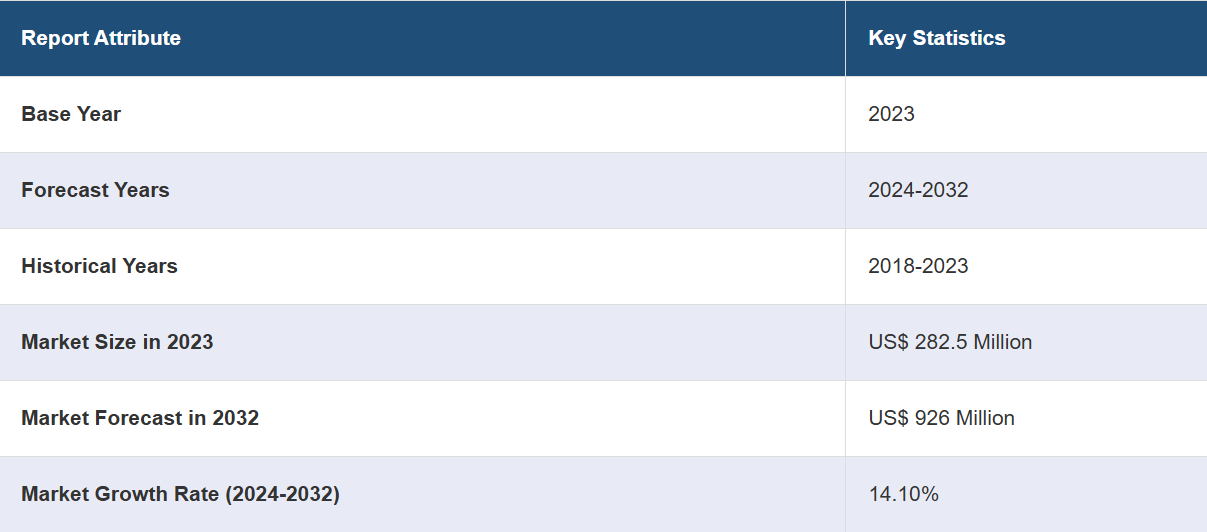❖本調査レポートの見積依頼/サンプル/購入/質問フォーム❖
| 本レポートは、日本における神経修復および再生市場に関する包括的な分析を提供することを目的としています。以下に、主要な内容を要約いたします。 まず、研究の目的や方法論について説明されており、主な利害関係者やデータソースの種類、及び市場推定の手法が示されています。特に、ボトムアップアプローチとトップダウンアプローチを用いて市場予測が行われています。 次に、日本の神経修復および再生市場の概要と、業界動向、競争状況についての情報が提供されています。市場の歴史的なトレンド(2018年から2023年)や、今後の市場予測(2024年から2032年)についても詳細に触れられています。 市場のセグメント別分析では、手術の種類や製品、最終利用者別の詳細が示されています。具体的には、直接神経修復、神経移植、幹細胞療法、神経刺激および調整手術などの手法が分析されています。それぞれの手法に関して、歴史的な市場動向と将来の見通しが記載されています。 製品別の内訳では、生体材料や神経刺激および調整デバイスが取り上げられ、それぞれの市場動向や予測が示されています。また、医療機関や外科的なクリニック、または外来手術センターといった最終利用者による市場の分析も行われています。 地域ごとの市場分析も行われており、関東、関西、中部、九州・沖縄、東北、中国、北海道、四国の各地域における市場動向が詳述されています。それぞれの地域における主要なプレイヤーや市場予測も含まれています。 競争環境については、市場構造や主要プレイヤーのポジショニング、成功戦略が分析されています。特に、競争力のある企業の評価やSWOT分析が行われ、主要な企業のプロファイルも提供されています。 最後に、業界分析では、市場の推進要因、抑制要因、機会について触れられ、ポーターのファイブフォース分析による市場競争の状況も考察されています。 このレポートは、日本の神経修復および再生市場に関する包括的なインサイトを提供し、今後の市場動向やビジネス戦略の立案に役立つ情報が含まれています。 |
神経の修復と再生とは、人体の損傷または傷ついた神経が機能状態に回復するプロセスを指します。この複雑な生物学的メカニズムには、一連の複雑なステップが関与しています。神経が損傷すると、主に末梢神経系におけるシュワン細胞と呼ばれる特殊な細胞によって、治癒反応が開始されます。これらの細胞は神経再生を促進する上で重要な役割を果たします。このプロセスは通常、損傷した組織の除去と再生する神経の先端における成長円錐の形成から始まります。この成長円錐は、化学シグナルと内神経管と呼ばれる経路に導かれながら、標的に向かって伸びていきます。神経線維は徐々に再生し、標的細胞との接続を再び確立することができます。神経の修復と再生に影響を与える要因には、損傷の程度と場所、個人の健康状態、損傷した神経の種類などがあります。特に重度の損傷の場合、完全な回復は常に可能であるとは限りません。神経損傷や神経疾患を持つ患者の治療成績を向上させるため、神経移植、成長促進因子、幹細胞療法など、神経修復を促進する方法を研究者が継続的に模索しています。
日本の神経修復・再生市場の動向:
日本の神経修復・再生市場は、相互に関連するいくつかの主要な要因によって牽引されています。まず、脊髄損傷や末梢神経損傷などの神経障害や神経損傷の発生率が上昇していることが主な要因となっています。地域人口の高齢化が進むにつれ、パーキンソン病やアルツハイマー病などの疾患の発生率も増加しており、神経修復のための革新的なソリューションが必要とされています。さらに、再生医療とバイオテクノロジーの進歩により、最先端の治療法への道が開かれ、市場成長に有利な環境が整っています。幹細胞治療、組織工学、遺伝子編集技術における画期的な進歩により、神経修復のための新たな道が開かれ、市場の大幅な拡大が促進されています。これに加えて、ヘルスケアインフラと研究開発活動への投資の増加が、神経修復・再生市場を後押ししています。最後に、低侵襲手術に対する意識と需要の高まり、そして患者の治療結果と生活の質の向上に対する要望が相まって、予測期間中の日本の神経修復・再生市場を牽引することが期待されています。
日本の神経修復・再生市場のセグメンテーション:
IMARC Groupは、市場の各セグメントにおける主要なトレンドの分析と、2024年から2032年までの国レベルでの予測を提供しています。当社のレポートでは、手術、製品、エンドユーザーに基づいて市場を分類しています。
手術に関する洞察:
直接的な神経修復/神経縫合
神経移植
幹細胞療法
神経刺激および神経調節手術
本レポートでは、手術別に市場の詳細な内訳と分析を提供しています。これには、直接神経修復/神経縫合術、神経移植、幹細胞治療、神経刺激および神経調節手術が含まれます。
製品別市場分析:
生体材料
神経刺激および神経調節装置
脊髄刺激装置
脳深部刺激装置
仙骨神経刺激装置
迷走神経刺激装置
胃電気刺激装置
製品をベースとした市場の詳細な内訳と分析も報告書に記載されています。これには、生体材料および神経刺激・神経調節装置(脊髄刺激装置、脳深部刺激装置、仙骨神経刺激装置、迷走神経刺激装置、胃電気刺激装置)が含まれます。
エンドユーザーの洞察:
病院およびクリニック
外来手術センター
本レポートでは、エンドユーザー別の市場の詳細な内訳と分析を提供しています。これには、病院およびクリニック、外来手術センターが含まれます。
競合状況:
市場調査レポートは、市場における競争環境の包括的な分析も提供しています。市場構造、主要企業のポジショニング、トップの勝利戦略、競争力のあるダッシュボード、企業評価の象限などの競争分析がレポートに記載されています。また、すべての主要企業の詳しいプロフィールも提供されています。
本レポートで回答される主な質問:
日本の神経修復・再生市場はこれまでどのような実績を残しており、今後数年間でどのような実績を残すと考えられるか?
日本神経修復・再生市場におけるCOVID-19の影響はどのようなものか?
日本神経修復・再生市場を外科別に分類するとどうなるか?
日本神経修復・再生市場を製品別に分類するとどうなるか?
日本神経修復・再生市場をエンドユーザー別に分類するとどうなるか?
日本の神経再生市場におけるバリューチェーンの各段階とは?
日本の神経再生の主な推進要因と課題は何か?
日本の神経再生市場の構造と主要企業は?
日本の神経再生市場の競争の程度は?

1 Preface
2 Scope and Methodology
2.1 Objectives of the Study
2.2 Stakeholders
2.3 Data Sources
2.3.1 Primary Sources
2.3.2 Secondary Sources
2.4 Market Estimation
2.4.1 Bottom-Up Approach
2.4.2 Top-Down Approach
2.5 Forecasting Methodology
3 Executive Summary
4 Japan Nerve Repair and Regeneration Market – Introduction
4.1 Overview
4.2 Market Dynamics
4.3 Industry Trends
4.4 Competitive Intelligence
5 Japan Nerve Repair and Regeneration Market Landscape
5.1 Historical and Current Market Trends (2018-2023)
5.2 Market Forecast (2024-2032)
6 Japan Nerve Repair and Regeneration Market – Breakup by Surgery
6.1 Direct Nerve Repair/Neurorrhaphy
6.1.1 Overview
6.1.2 Historical and Current Market Trends (2018-2023)
6.1.3 Market Forecast (2024-2032)
6.2 Nerve Grafting
6.2.1 Overview
6.2.2 Historical and Current Market Trends (2018-2023)
6.2.3 Market Forecast (2024-2032)
6.3 Stem Cell Therapy
6.3.1 Overview
6.3.2 Historical and Current Market Trends (2018-2023)
6.3.3 Market Forecast (2024-2032)
6.4 Neurostimulation and Neuromodulation Surgeries
6.4.1 Overview
6.4.2 Historical and Current Market Trends (2018-2023)
6.4.3 Market Forecast (2024-2032)
7 Japan Nerve Repair and Regeneration Market – Breakup by Product
7.1 Biomaterial
7.1.1 Overview
7.1.2 Historical and Current Market Trends (2018-2023)
7.1.3 Market Forecast (2024-2032)
7.2 Neurostimulation and Neuromodulation Devices
7.2.1 Overview
7.2.2 Historical and Current Market Trends (2018-2023)
7.2.3 Market Segmentation
7.2.3.1 Spinal Cord Stimulation Devices
7.2.3.2 Deep Brain Stimulation Devices
7.2.3.3 Sacral Nerve Stimulation Devices
7.2.3.4 Vagus Nerve Stimulation Devices
7.2.3.5 Gastric Electric Stimulation Devices
7.2.4 Market Forecast (2024-2032)
8 Japan Nerve Repair and Regeneration Market – Breakup by End User
8.1 Hospitals and Clinics
8.1.1 Overview
8.1.2 Historical and Current Market Trends (2018-2023)
8.1.3 Market Forecast (2024-2032)
8.2 Ambulatory Surgical Centers
8.2.1 Overview
8.2.2 Historical and Current Market Trends (2018-2023)
8.2.3 Market Forecast (2024-2032)
9 Japan Nerve Repair and Regeneration Market – Breakup by Region
9.1 Kanto Region
9.1.1 Overview
9.1.2 Historical and Current Market Trends (2018-2023)
9.1.3 Market Breakup by Surgery
9.1.4 Market Breakup by Product
9.1.5 Market Breakup by End User
9.1.6 Key Players
9.1.7 Market Forecast (2024-2032)
9.2 Kansai/Kinki Region
9.2.1 Overview
9.2.2 Historical and Current Market Trends (2018-2023)
9.2.3 Market Breakup by Surgery
9.2.4 Market Breakup by Product
9.2.5 Market Breakup by End User
9.2.6 Key Players
9.2.7 Market Forecast (2024-2032)
9.3 Central/ Chubu Region
9.3.1 Overview
9.3.2 Historical and Current Market Trends (2018-2023)
9.3.3 Market Breakup by Surgery
9.3.4 Market Breakup by Product
9.3.5 Market Breakup by End User
9.3.6 Key Players
9.3.7 Market Forecast (2024-2032)
9.4 Kyushu-Okinawa Region
9.4.1 Overview
9.4.2 Historical and Current Market Trends (2018-2023)
9.4.3 Market Breakup by Surgery
9.4.4 Market Breakup by Product
9.4.5 Market Breakup by End User
9.4.6 Key Players
9.4.7 Market Forecast (2024-2032)
9.5 Tohoku Region
9.5.1 Overview
9.5.2 Historical and Current Market Trends (2018-2023)
9.5.3 Market Breakup by Surgery
9.5.4 Market Breakup by Product
9.5.5 Market Breakup by End User
9.5.6 Key Players
9.5.7 Market Forecast (2024-2032)
9.6 Chugoku Region
9.6.1 Overview
9.6.2 Historical and Current Market Trends (2018-2023)
9.6.3 Market Breakup by Surgery
9.6.4 Market Breakup by Product
9.6.5 Market Breakup by End User
9.6.6 Key Players
9.6.7 Market Forecast (2024-2032)
9.7 Hokkaido Region
9.7.1 Overview
9.7.2 Historical and Current Market Trends (2018-2023)
9.7.3 Market Breakup by Surgery
9.7.4 Market Breakup by Product
9.7.5 Market Breakup by End User
9.7.6 Key Players
9.7.7 Market Forecast (2024-2032)
9.8 Shikoku Region
9.8.1 Overview
9.8.2 Historical and Current Market Trends (2018-2023)
9.8.3 Market Breakup by Surgery
9.8.4 Market Breakup by Product
9.8.5 Market Breakup by End User
9.8.6 Key Players
9.8.7 Market Forecast (2024-2032)
10 Japan Nerve Repair and Regeneration Market – Competitive Landscape
10.1 Overview
10.2 Market Structure
10.3 Market Player Positioning
10.4 Top Winning Strategies
10.5 Competitive Dashboard
10.6 Company Evaluation Quadrant
11 Profiles of Key Players
11.1 Company A
11.1.1 Business Overview
11.1.2 Services Offered
11.1.3 Business Strategies
11.1.4 SWOT Analysis
11.1.5 Major News and Events
11.2 Company B
11.2.1 Business Overview
11.2.2 Services Offered
11.2.3 Business Strategies
11.2.4 SWOT Analysis
11.2.5 Major News and Events
11.3 Company C
11.3.1 Business Overview
11.3.2 Services Offered
11.3.3 Business Strategies
11.3.4 SWOT Analysis
11.3.5 Major News and Events
11.4 Company D
11.4.1 Business Overview
11.4.2 Services Offered
11.4.3 Business Strategies
11.4.4 SWOT Analysis
11.4.5 Major News and Events
11.5 Company E
11.5.1 Business Overview
11.5.2 Services Offered
11.5.3 Business Strategies
11.5.4 SWOT Analysis
11.5.5 Major News and Events
Company names have not been provided here as this is a sample TOC. Complete list to be provided in the final report.
12 Japan Nerve Repair and Regeneration Market – Industry Analysis
12.1 Drivers, Restraints, and Opportunities
12.1.1 Overview
12.1.2 Drivers
12.1.3 Restraints
12.1.4 Opportunities
12.2 Porters Five Forces Analysis
12.2.1 Overview
12.2.2 Bargaining Power of Buyers
12.2.3 Bargaining Power of Suppliers
12.2.4 Degree of Competition
12.2.5 Threat of New Entrants
12.2.6 Threat of Substitutes
12.3 Value Chain Analysis
13 Appendix
